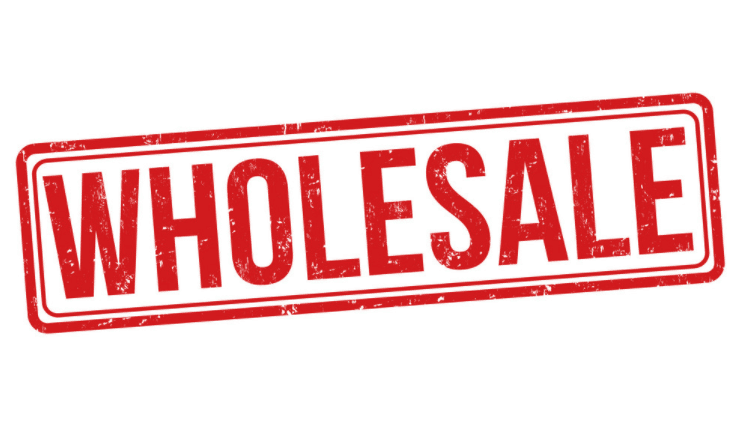
Every selling company has struggled with pricing their products at one time or another, be it wholesale or retail sellers. If you’re struggling with this, you’re not alone.
There are many mathematical formulas used to determine a product’s price, profit, markup, markdown, profitability, and sales history. Thankfully, there are only a few things you need to know when pricing your direct-to-consumer sales and wholesale products.
Here, we’ll walk you through some of those formulas and some steps you can take to create a successful pricing strategy for your products, whether you’re selling wholesale, retail, or both.
Gua Sha Wholesale Price And Retail Price
Wholesale and retail are two fundamentally different processes: Wholesale involves moving goods from manufacturing to distribution. Retailing involves acquiring goods and selling them to customers.
Manufacturers or distributors sell goods to retailers at wholesale prices. The retailer then sells the same product to the consumer at a higher price (retail price).
What is Gua Sha Wholesale Pricing?
Wholesale pricing is a relatively favorable price offered by the seller to the buyer when the buyer provides the seller with an order of a considerable number of products. Usually the price offered by the wholesaler to the retailer.
The goal of wholesale pricing is to sell a product at a price above the cost of the product, thereby earning a cost. For example, for the manufacture of a gua sha board, the sum of all costs such as labor costs is $1, then the wholesale price of the gua sha stone can be set at $1.50, so that there is a profit of $0.5 per piece of gua sha board sold. It should be noted that the wholesale price is not fixed, it will fluctuate up and down with the order quantity.
What is the Gua Sha Retail Price?
Retail price refers to the final selling price set by the retailer for the final consumer.
Retail pricing is entirely up to your customers. i.e. how much your customers are willing to pay for your product. Your pricing can be less than their maximum affordability, but not more.
This is the tricky part of retail pricing because the answer to this question is often fluid.
Suppose a retailer gets a product at a wholesale price of $5 and wants to make a profit of $5. At this point, the retailer will price the product at $10 in-store. This is called cornerstone pricing. But if the retailer wants to make more profit, that price will go up.
As a Gua Sha wholesaler, we sometimes offer our customers a suggested retail price (SPR). Customers do not have to follow our suggested retail price to set prices, we just provide a reference value.
How to Calculate Wholesale Product Pricing?

1. Research your market:
How to set your wholesale prices? First of all, you need to know your position clearly. High quality brand? A low-priced brand or a personalized brand? Different positioning determines your image in the eyes of customers and also determines your wholesale price. Generally speaking, in terms of price, the wholesale price positioning of brands that focus on personalized customization is the highest, followed by high-quality brands, and finally the brands that focus on low-price strategies.
If a lower price point is your competitive advantage, keep that in mind when doing your research. Know your break-even point and use the break-even point formula to calculate that number. If your target customers are more budget-conscious or looking for high-quality, high-end products, consider these factors when conducting market research.
2. Calculate the Manufacturing Cost of Your Products
Cost of Goods Manufactured (COGM) is the total cost of manufacturing or purchasing a product, including materials, labor, and any additional costs required to put the item in inventory and prepare it for sale, such as shipping and handling.
The COGM of a product can be determined by the following calculation:
Total Material Cost + Total Labor Cost + Additional Costs and Overheads = Cost of Manufactured Goods
3. Calculate Your Wholesale Price
After researching the market and calculating the manufacturing cost of the product, we can start to calculate our final wholesale price.
- Absorption Pricing
Absorption pricing refers to the consideration of all relevant costs, including fixed costs and profit margins, when determining a price. It is called “absorption” because all costs are consumed in the final price of the product.
- Wholesale price = cost price + profit margin
For example a rose quartz gua sha board costs $1.50 to manufacture and you want a 40% profit margin. Then the wholesale price is $1.5 + ($1.5 × 40%) = $2.1.
- Advantages of Absorption Pricing
It is easy to use and does not require any training or complex formulas
Your profit is almost guaranteed. If you can count all your expenses, you can potentially make a decent profit
- Disadvantages of absorption pricing
Pricing gaps arise frequently and do not take into account any competitor pricing
This approach does not consider value perception. You may be charging too much to send potential buyers to other providers.
- Differentiated Pricing.
Differentiated pricing is a wholesale pricing method used to optimize return on investment by calculating demand for a product. In this case, different buyers in different situations pay different prices for the same product.
Also known as demand pricing or time-based pricing, this approach is based on the idea of a buyer accepting to determine the price in any given market condition.
For example, if you sell swimsuits, you can sell them at above average market value during peak season. You’ll notice that at retail, swimsuit prices jump up quickly at the start of summer, then fall back when demand drops.
This also applies to areas where there is less competition and customers typically buy products at higher prices, such as beach resorts or airports.
Using differentiated pricing, wholesalers can also offer products at lower prices. For example, if you have too much old stock on hand, you can do a last-minute flash sale, walk away, and make some profit.
Regardless, you need to set a price that buyers feel is fair to the value of the product and still earns them a decent profit at the end of the day.
Advantages of Differentiated Pricing
- This approach provides the greatest return on investment. It lets you capitalize on market scenarios in real time, stay competitive, and gives you access to buyer data.
- When demand for a product is higher, buyers are usually willing to pay a premium, which means more profit for you. You can use differentiated pricing to sell popular products and other hard-to-find or very popular items
Disadvantages of Differentiated Pricing Approaches
- There is a fine line between maximizing profits and overcharging wholesale customers. If you are seen as opportunistic, or if people think you are gouging their prices, it will damage your brand reputation. You don’t want to be associated with this greed because buyers won’t come back to buy from you.
Tiered Pricing
Tiered pricing refers to providing buyers with different unit prices for the same product under different order quantities.
Advantages of tiered pricing
- May prompt buyers to choose higher quantity orders.
Disadvantages of tiered pricing
- May cause buyers to have a psychological gap. That is, when he buys a low-quantity product, he has doubts about the actual value of the product. (Because the price for high order quantity will be much cheaper.)
For example, let’s say our rose quartz gua sha board costs $1.50 to manufacture, and at the same time, we want to make sure that the profit margin on the product is between 30%-60%. So the minimum wholesale price for this piece of rose quartz is $1.95-$2.4/piece. So we will set a value called the step price. For example, when the wholesale quantity is less than 100, the wholesale price is $2.4/piece, and when the wholesale quantity is 100-500 pieces, the wholesale price is $2.3. And so on. In summary, the wholesale price per unit decreases as the number of orders increases.
How to Calculate Retail Product Pricing?

The suggested retail price (SRP), also known as the manufacturer’s suggested retail price (MSRP), is the price a manufacturer or wholesaler recommends a retailer set for their product.
It’s important to make sure retailers meet or at least exceed your SRP so they don’t undercut you or your other retail partners.
The retail price is calculated according to the following formula:
Wholesale Price / (1 – Markup Percentage) = Retail Price
Here’s an example based on a wholesale price of $30 and a 60% markup percentage:
$30 (wholesale price) / (1 – 0.6) = $75 (retail price)
Research your market to see how other comparable brands or retailers price. You can then look backwards to see if your target retail price is feasible based on the cost of producing the product.
For example, if your target retail price is $60, and you want to give the wholesaler 55% of the retail profit and yourself 50% of the wholesale profit, you can reverse the wholesale price using this pricing formula:
$60 (retail price) x (1 – .55) = $27 (wholesale price)
Then, calculate your target cost price (cost of goods) to maintain a 50% wholesale profit:
$27 (wholesale price) x (1 – .5) = $13.50 (target cost)
How to Develop a Dual Product Pricing Strategy
Why develop a dual pricing strategy? If you are a wholesaler, you also have your own retail store. When you offer wholesale prices to your partners, you must ensure that your retail store is profitable and that the price doesn’t hurt your retail partners. This is where you need to use a dual pricing strategy. Of course, if you don’t have and don’t plan to start your own retail store, you don’t have to use a dual pricing strategy.
A dual pricing strategy means that you will create an external retail price for products listed on your website that your direct customers see, and share a separate wholesale price with wholesale or potential wholesale accounts in the form of a line table.
When you sell wholesale, you may be selling a higher quantity per order, which allows you to sell the product at a lower price.
This is where formulas come in handy. You can mathematically determine your profit and set wholesale and suggested retail prices for your products.
For example, if you design and manufacture Gua Sha boards and sell them wholesale and retail, you’ll want to look at the following numbers:
Cost of Goods (COG): $1.50 to make a rose quartz scraper
Wholesale Price : $2.5
Suggested Retail Price (SRP): $10
Then you will be able to calculate wholesale and retail profits:
Your Wholesale Profit: 40% Wholesale Profit Margin = $2.5 Wholesale – $1.5 COG / $2.5 Wholesale
Retailer’s profit margin when using your SRP: 75% retail profit margin = $10 retail – $2.5 wholesale / $10 retail
Retail Margin When Selling Direct-to-Consumer (D2C): 85% Retail Margin = $10 Retail – $1.5 COG / $10 Retail
With the wholesale and retail pricing strategies described above, your gross margin is 40% on wholesale orders and 85% on DTC orders. look tall? This is just an estimated value. The actual profit will be lower than the above appears.
Differences in different countries and different locations can lead to changes in profits. (Because this is profit excluding shipping). As far as our retail mall is concerned, its D2C profit usually does not exceed 50%. For some specific countries, wholesale and retail profit margins tend to be low. Typically, for example, the same product is sold to retailers in the U.S. as well as in India, and wholesale profit margins in the U.S. tend to be around 50% higher than in India.
Create Your Gua Sha Wholesale Pricing Strategy
Now that you have a better understanding of the formula used to calculate product pricing, it’s time to develop your own pricing strategy. Create a spreadsheet that lists your products by style number and name, and includes columns for item cost, wholesale price, wholesale profit, retail price, and retail profit.
Use the formula above to create a costing chart that you can plug numbers into every time you need to define pricing for a new product.
If this article was helpful to you, please share it with whoever you think needs it. If you have errors in some content in the article or need to add something, you are welcome to leave a message in the comment area or email. We will discuss with you. Thanks for reading.
Product Pricing FAQs
1. Should All Products be Priced Uniformly?
No, it’s not. For general, mass-market products, pricing should remain consistent. However, for customized, patented, or brand-specific products, profits can be appropriately increased.
2. How Should I Set the Price for My Gua Sha?
Conduct market research. Gather information about the prices of competitors within your sales channels. This includes basic information such as sales volume, average price, and median price. If you are selling a popular product, it is recommended that you set a price slightly lower than the average bid of your competitors to attract customers.






